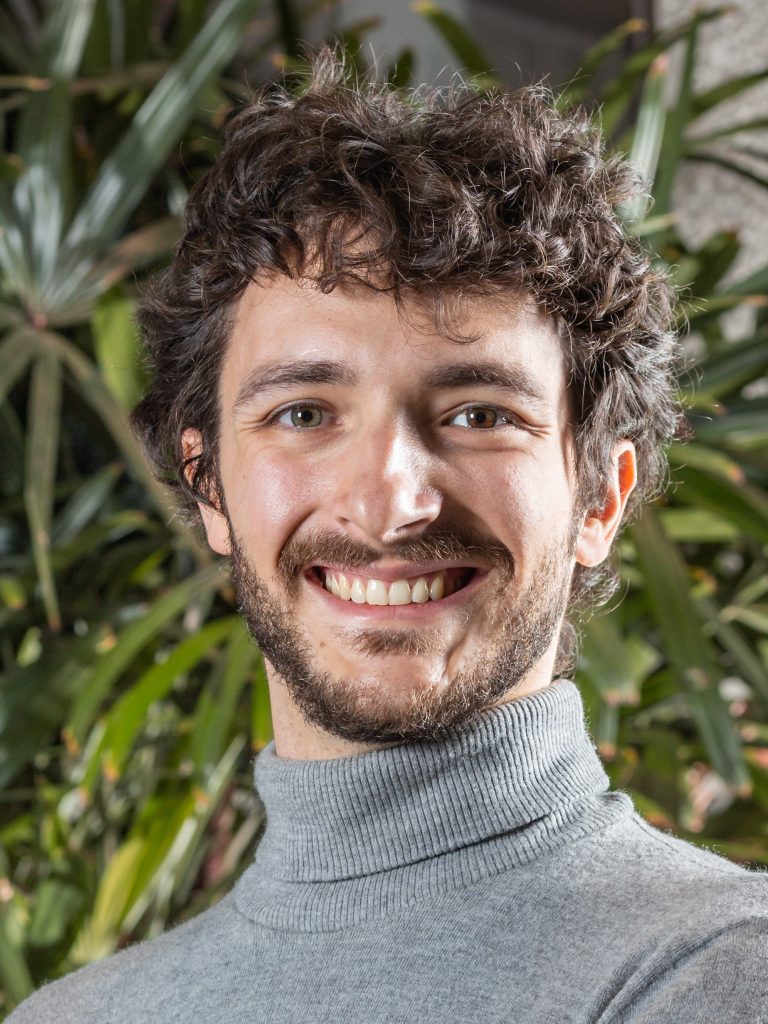
Andrea Luppi, McGill University
Andrea I. Luppi, S. Parker Singleton, Justine Y. Hansen, Keith W. Jamison, Danilo Bzdok, Amy Kuceyeski, Richard F. Betzel & Bratislav Misic. Contributions of network structure, chemoarchitecture and diagnostic categories to transitions between cognitive topographies. Nature Biomedical Engineering 8, 1142–1161 (2024).
Understanding how the brain’s network architecture shapes its capacity to transition between different states
To support the diversity of human cognitive functions, such as learning, thinking, reasoning, remembering, problem solving, decision making, and attention, brain regions flexibly form and dissolve connections on the fly. How is the brain’s capacity to transition between different functional configurations shaped by brain network architecture? Andrea Luppi, working in Bratislav Misic’s lab at McGill University and the Montreal Neurological Institute, investigated this question using engineering principles of network control to simulate transitions between behaviourally derived brain states. They identified >100 cognitively relevant brain states in a data-driven manner, corresponding to activation patterns aggregated over 14,000 fMRI studies from a large collaborative database called NeuroSynth, and effectively mapped how brain network organization and chemoarchitecture interact to manifest these brain states. By leveraging large-scale databases of network structure, functional activation and neurotransmitter systems, the present work provides an integrative framework for the systematic exploration of the full range of possible transitions between experimentally defined brain states. This systematic approach allowed the researchers to discover the key role of the brain’s wiring diagram in supporting flexible transitions with high energetic efficiency, and how this efficiency can be disrupted by disease and restored by targeted pharmacology.
Specifically, Luppi and colleagues discovered that the network architecture of the human connectome enables transitions between brain states at lower energetic cost than 1000s of alternative wiring schemes. They then systematically modelled how transitions could be impacted by changes in brain architecture associated with 11 neurological, psychiatric and neurodevelopmental disorders from 17,000 patients in the ENIGMA database (a large collaborative brain imaging database). They found systematic relationships between brain abnormality and transitions towards brain states supporting memory and language, providing a mechanistic link between anatomical changes and cognitive symptoms.
Finally, they leveraged the largest available database of neurotransmitter receptor expression in the human brain in vivo (18 receptor and transporter maps from >1,200 PET scans) to predict the effects of pharmacological interventions. The transporters and receptors of dopamine, a key neurotransmitter, emerged as well positioned to facilitate many desired brain transitions – consistent with their engagement by drugs used to treat attention deficit. Crucially, this model also highlighted other receptors as suitable targets to achieve specific brain states.
The predictions generated by this model have numerous potential clinical and non-clinical applications. This model is not merely descriptive, but mechanistic: it provides explicit, testable predictions about which cognitive transitions should be easier or harder. In this study, the researchers successfully predicted participants’ task-switching difficulty in the scanner, given credence to the proposed model. They have made their computational model fully available online, making it straightforward for other researchers to customise it with brain maps representing additional cognitive states of interest, or brain networks from individual patients.
About Andrea Luppi
A native of Italy, Dr Andrea Luppi performed this work as a post-doctoral researcher at the Montreal Neurological Institute, McGill University. His leading role in this work is reflected in his position as both first author and corresponding author. He was involved in all aspects of the study, from conception to execution. Andrea is currently a Wellcome Trust Research Fellow at the University of Oxford, and Research Fellow of St John’s College, Cambridge.
Source of funding
Dr Luppi was supported by the Molson Neuro-Engineering Fellowship of the Montreal Neurological Institute, and FRQNT Strategic Clusters Program (2020-RS4-265502—Centre UNIQUE—Union Neuroscience and Artificial Intelligence—Quebec) via the UNIQUE Neuro-AI Excellence Scholarship.
